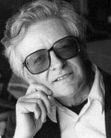June – July 2025
Hannah Watson asked me for an essay on the role that the Liberty store played in cultural history to be included in a box set of booklets and essays published to celebrate the store’s 150th anniversary. Oscar Wilde praised it, it promoted the arts and crafts movement, was loved by the bright young people, dressed the Chelsea set, provided furnishing fabric for Granny Takes a Trip’s psychedelic jackets and David Bowie’s many personalities, before finally showing up at Taboo in Leigh Bowery’s fantastic costumes. There was a suitable launch in the exhibition of their historic fabrics in the store’s fourth floor exhibition. I wore a Liberty foulard.


I have been working a lot with Ed Maggs from the venerable antiquarian bookstore Maggs. He kindly turns to me when the subject of an archive falls within my specialisms: Beat Generation, British Counterculture and so on. Here is a particularly pleasant evening I spent with Ed and Fran at my local Italian.

On June 22, we had a visit from my God-daughter Sara Minard, born in London of American parents and living in New York City. I hadn’t seen her in a while and forgot that she was a vegetarian. Here is her reaction to a tray full of roast quail. She works for the mayor’s office so she is a diplomat. She ate one.

There was an on-stage interview with Nicola Bowery Rainbird, Leigh Bowery’s wife, to go with the huge Leigh Bowery show on at Tate Modern. I went with Hannah who curated the previous Bowery show, held at the Fitzrovia Chapel (I wrote one of the catalogue essays). Here’s Hannah with Nicola, her son Angus, and gallerist Riccardo Pillon. The party spread to the grass outside the Tate beside the Thames. Hannah is here with Jessica Baxter, who curated the Tate show.



The global-warming fuelled summer sun brought out the flowers. My old friend Fran Bentley showed me her garden.

It had been ages since I saw my friend Yang Lee. He came over with Lisa and here he enjoys a smoke with George Orwell. Lisa is a model from Novosibirsk, Siberia, and we discussed the role of Siberian troops in the Battle for Moscow in WWII. (Always high-level intellectual conversation around here you understand.) We dined at the Wolseley.
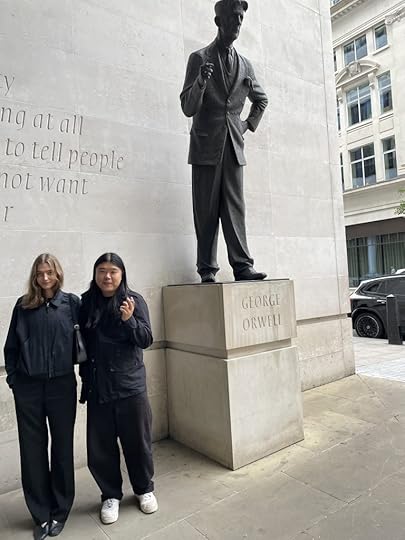
In Paris to discuss a show of Brion Gysin’s work at the Musée d’art moderne de Paris, I stayed at the Hotel La Louisiane on the rue de Seine. It’s always an exercise in false nostalgia as I never met J-P Sartre, Simone de Beauvoir, Albert Cossery, Boris Vian, Albert Camus or Fujita who lived there. Or Charlie Parker, Bud Powell or any of the jazz greats who stayed there (it was where Miles Davis and Juliette Greco had their legendary affair in 1948). More recent guests included Jim Morrison, Keith Haring, Lucien Freud and Juliette Binoche. It’s still cheap – by Paris standards – and though that part of the Left Bank is now insanely expensive and gentrified, it reminds me of how it used to be when I first stayed in the area – at the Hotel de Seine a few doors up the street – back in 1966. My friend Luzius was also staying there, in town from Basel, for the same meetings, being the owner of a substantial collection of Gysin material. His wife Sairung was with him, here at the Palette. On our off-day, Luzius and I visited the Balzac Museum, which neither of us had been to. This is the desk at which he wrote La Comédie humaine. It’s a beautiful small museum – free, unusual for Paris – with a delightful garden and café. It is hard to imagine that when the house was built it was in open countryside.


Luzius and I were in Paris to meet with Hélène Leroywho is the Conservatrice en chef, Responsable des collections at the Musée d’art modern de Paris, and is organising a Brion Gysin exhibition for 2026 together with Olivier Weil. We have had previous meetings both here and in London and we are all in agreement as to how the show should look. Here we have Olivier, Hélène and her daughter Julie, at one of my favourite Parisian cafes, Chez René on blvd St Germain. (The snails are very good – huge, and they also do frogs’ legs. It’s a proper place.)

I ended my visit with a couple of nights with my old friends Catherine and Steve. We went to the Niki de Saint Phalle and Jean Tinguely show at the Grand Palais. It is a huge show. I should have done my usual thing of running through the show first then returning to the start and pacing myself, as there were loads of videos that, for once, I really wanted to stop and see. But I didn’t and we were there almost two hours. I hadn’t realised how much of their work was genuine collaboration rather than mutual support. I had a picture of them, torn from a magazine pinned to my wall when I was art school back in the early sixties, and have always liked their work enormously. When we started International Times, one of the first art illustrations we used was of Nana, the huge sprawling female figure that you entered between the legs, that only existed for six months in 1966 at Stockholm’s Moderna Museet before it was destroyed. Fortunately, a few fragments remain: the head was at the Grand Palace and a fragment of torso. More importantly there was a lot of very interesting documentation about the figure and the original show.

There were also some major examples of her ‘tir’ series, where she made large assemblage ‘paintings’ which incorporated bags of paint which she, and invited friends, then shot at, causing the paint to spray and drip all over the work. William Burroughs credited her with being an influence on his ‘shotgun’ paintings. The pieces, before-shooting, reminded me of Robert Rauschenberg’s work, and indeed, he was one of her friends and did some of the shooting.
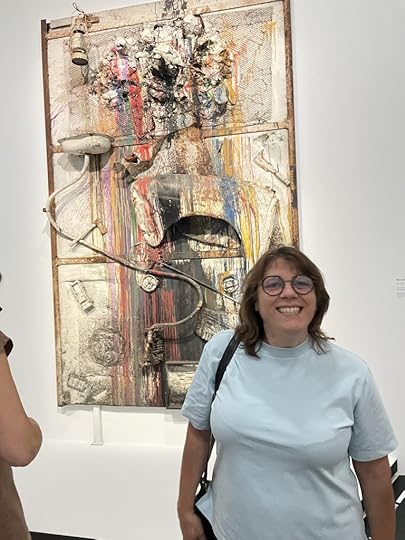
And of course there were loads of Tinguely’s amazing machines, including several painting machines, shown here, as well as films of the ones that auto-destructed like the one in New York. In the film a small section, like a small trolly, can be seen escaping as firemen tackle the implosion and it is displayed in the show, next to the film of the event.
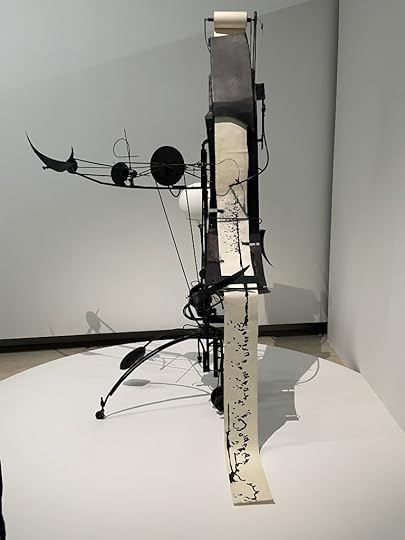
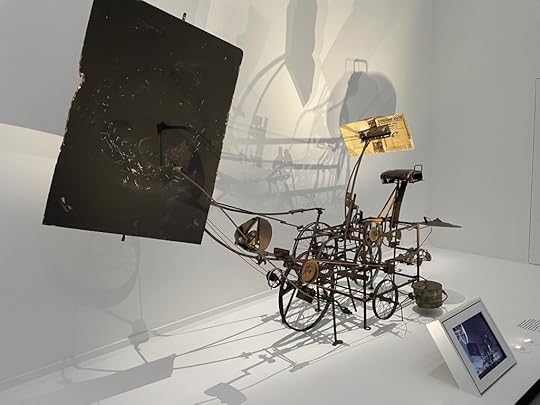
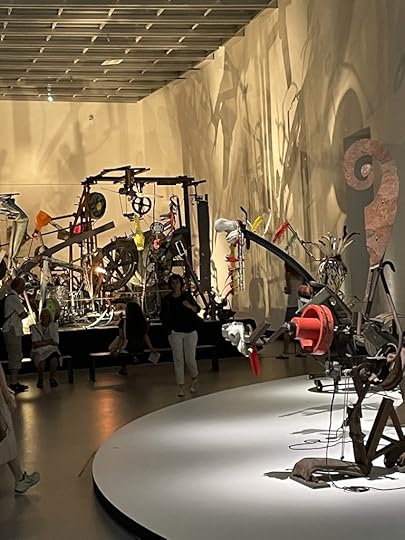
Catherine and Steve collected me and my baggage from the hotel and it was fun to hang out at my old haunts with them. Back in the sixties and seventies the area was still cheap and filled with inexpensive hotels that you could just show up at and get a room. Then they started installing lifts, putting up the price, then they were bought out. Only a few remain today like the Hotel du Seine or La Louisiane. The Palette is still there, and the mirrors are becoming more and more corroded. Bill Burroughs liked it here.

Catherine and I visited the Musée de Montmartre, housed in a 300-year-old complex of artists’ studios and housing. Renoir lived here, (his garden has been recreated), as did Raoul Dufy, Suzanne Valadon, her husband André Utter and her son the painter Maurice Utrillo. Valadon’s studio is preserved intact with no vitrines or glass protection and you can just wander about in it. It’s like time travel. A wonderful experience.



The museum also contains items from Le Chat Noir. Here is the original zinc, complete with ancient bottles, Catherine, and me.


A visit to Paris would not be complete without a dinner with Brunhild Meyer-Ferrari and her companion Junor. Her latest recording, ‘Errant Ear-2024’ has just been released. She worked with her husband, composer Luc Ferrari for 40 years and after his death in 2005 continued to release her own recordings. Catherine cooked a superb dinner for us all, then apparently tried to raise the table. Pix by Junor.



Remember that from the river to the sea it’s all Palestine. Israeli genocide continues.

Barry Miles's Blog
- Barry Miles's profile
- 152 followers


